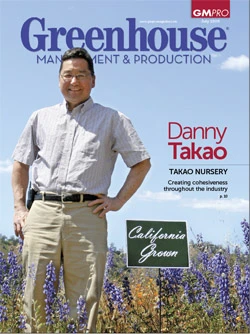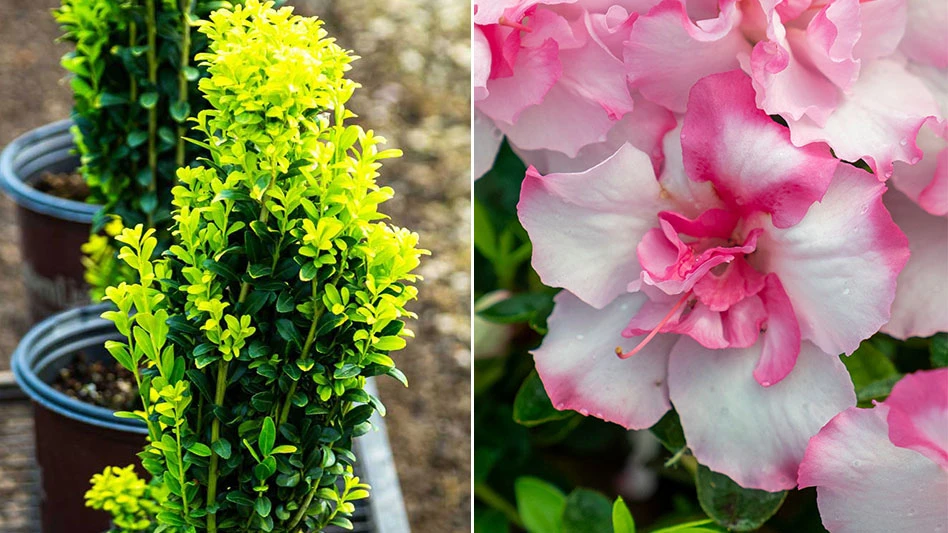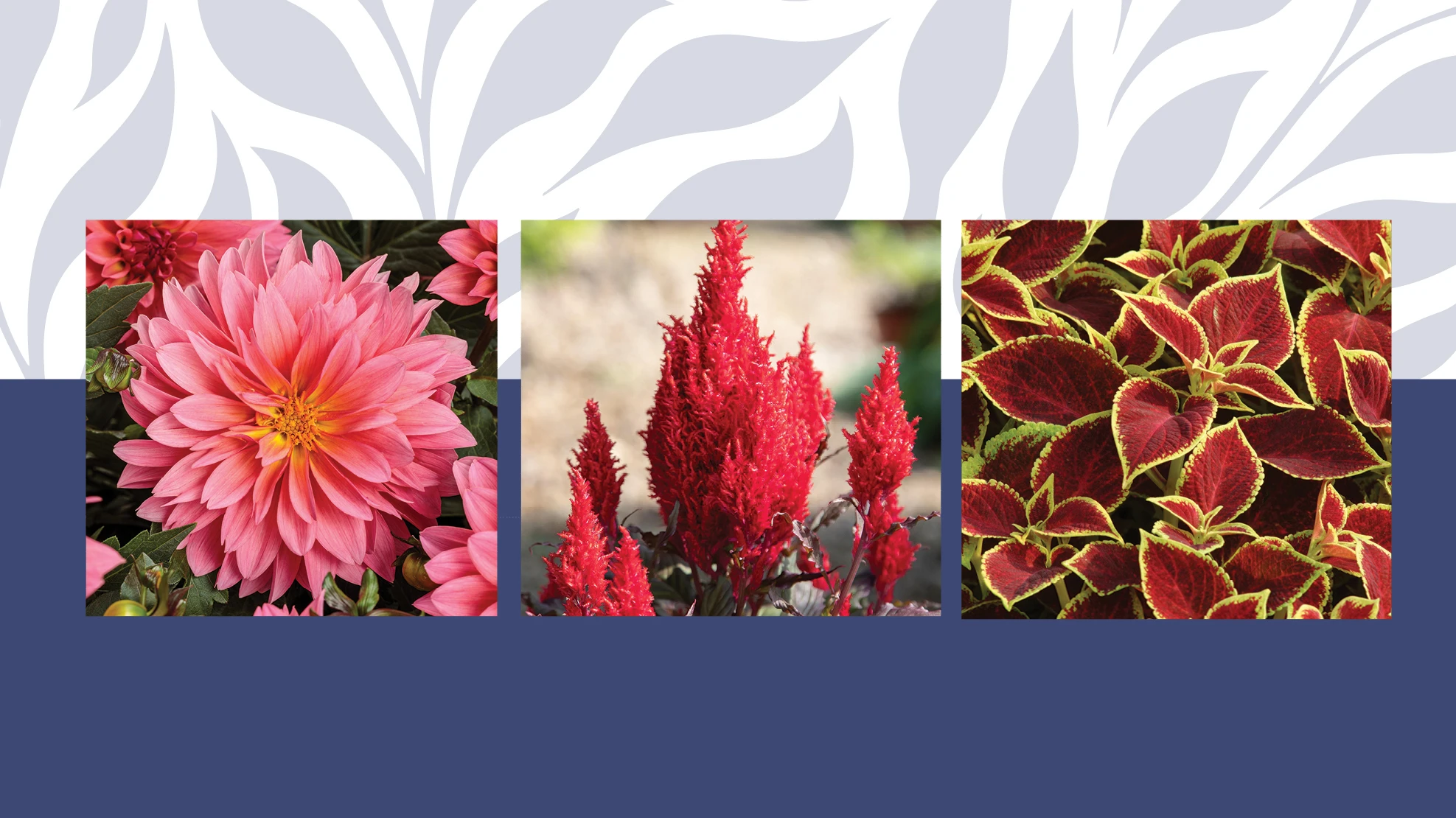 Walking through the various stops during this year’s spring pack trials in California, there was a sense of excitement and apprehension. Excitement to get the spring sales season started and apprehension that poor weather might hold back consumers who have been gun shy about spending money. Even the marketing displays had less of a feeling of whimsy and more of what’s going to help sell more plants. Keep it basic — make it simple for the grower, the retailer and the consumer to understand.
Walking through the various stops during this year’s spring pack trials in California, there was a sense of excitement and apprehension. Excitement to get the spring sales season started and apprehension that poor weather might hold back consumers who have been gun shy about spending money. Even the marketing displays had less of a feeling of whimsy and more of what’s going to help sell more plants. Keep it basic — make it simple for the grower, the retailer and the consumer to understand.
Although some of the visiting groups were smaller, the visitors were still very enthusiastic to see the new introductions, learn about recommended production and handling practices, and check out the marketing ideas they could adapt to their own programs.
Here are some of the new plants that were displayed this year.
Foliage favorites
If you’re looking to add a little flavor to your coleus collection, consider PanAmerican Seed’s upright-growing ‘Chocolate Splash.’ This Made for the Shade selection produces mid-sized bright green leaves splashed with a chocolate brown pattern that varies with age and light levels. Higher light levels and warmer temperatures increase the amount of brown coloration.
Proven Winners new Illusion ipomoea series is from North Carolina State University breeding, which developed the Sweet Caroline series. Emerald Lace has deeply dissected, emerald green leaves. Midnight Lace has deeply dissected, dark purple leaves with magenta venation. Both varieties do not produce large tubers and have a mounding habit reaching 8-10 inches tall and up to 36 inches wide.
Oro Farms is offering the Bright Idea ipomoea series bred by Floranova. The series includes Black, Lime and Rusty Red which are compact plants not requiring growth regulators.
Displaying for the first time at the California spring trials, Happiness Farms in Lake Placid, Fla., showed a wide assortment of caladiums at GroLink’s facility. Happiness Farms produces between 50-60 field-grown caladium varieties. The company is developing new varieties with breeders at the University of Florida.
Heat, drought-tolerant plants
Plug Connection introduced its new Mosaic Succulents program of 60 different varieties. Many are ideal for drier, warmer climates, but they have great potential as unique indoor potted plants. All of these very tough plants are produced vegetatively from cuttings or tissue culture. Plug Connection is offering sample trays that contain six different varieties.
GroLink is introducing 14 coleus and four lantana varieties in 2010.
Ecke’s new Puebla Salvia greggi series is a member of its Painted Dunes Collection. Bred by Gamia Plant Breeding in Spain, the four varieties do best in full sun and well-drained soil. These plants tolerate high-stress locations and flower from spring to fall. The fragrant flowers attract butterflies and hummingbirds.
EuroAmerican Propagators has introduced its new line of Ecovation plants. These water-wise plants are very drought tolerant and able to survive on 1-2 gallons of water per week. Many of these plants, which flower up to four months, also have the potential to be used as indoor pot crops.
Pansy, violas
Mammoth is a good name for Goldsmith Seeds’ new extra large flowering pansy series. Bred in Gilroy, Calif., by Todd Perkins, plants are stretch resistant under warm temperatures. These strong branching plants quickly fill in the pots producing a beefy habit and large, flat flowers. There are 11 separate colors including clear and blotch faces along with two mixes. John Henry has created a variety of POP material. The furry mammoth logo is sure to remind kids and parents of the woolly mammoth, Manny, in the Ice Age movies.
Inspire is Benary’s new 24 color series, which contains clear and blotch faces that produce medium-size flowers. It draws on the best of the company’s FamaX series along with new genetics to create a series that can handle extreme weather conditions. This series, which has been in development for eight years, is aimed specifically for the unique needs of the U.S. market.
Sense is Floranova’s new S1 (synthetic) hybrid series of 13 varieties containing both clear and blotch colors. The series is considered an economical, high-quality option costing half the price of F1 seed.
Petunia
Soleil Purple is a drought-tolerant petunia from Tesselaar, which is available from Selecta First Class. It just might be a landscapers’ dream plant, and consumers should like it, too. This spreading petunia actually puts out more flowers when it is water stressed. If too much water is applied, few flowers will be produced.
PanAmerican’s Sophistica Collection starts out with three vigorous varieties that produce large flowers in unique shades. The three are matched for flower timing. Lime/Rose Bicolor is the most unique flower color of the three. Its color changes depending on the heat and light levels and the age of the flowers. Antique Shades produces antique rose-colored, star-shaped flowers with a yellow throat. Blue Morn’s flowers have a blue margin with a silver-white throat. The throat is more noticeable under warm, high-light conditions.
The four colors in the new Sun Spun series from Ball FloraPlant have a compact, ball-shaped habit. The plants are a quick finish, tight-space, low-water, low-temperature crop. Their habit keeps them controlled on the bench as well as at retail, allowing them to be displayed pot tight.
Pretty Much Picasso from Proven Winners produces bicolor flowers with a purple center and green picotee margin. This full sun plant has a vigorous trailing habit reaching 8-12 inches tall and up to 36 inches wide.
Comparison trials
Pacific Plug & Liner did a comparison trial of hardy salvia, vegetative lobelia and scaevola varieties. Most of the salvias trialed were blue flowering varieties with a few whites. PP&L new product development and marketing manager Ryan Hall said there was a lack of uniformity between colors within each series. He said the Laguna series, which had smaller more compact plants, was a top performer.
Among the blue scaevola varieties, Hall said all of the trailing types looked very similar. Based on the trial results, he felt there was no reason to pay a higher royalty for any particular variety. The most compact scaevola series in the trial was Surdiva.

Explore the July 2009 Issue
Check out more from this issue and find your next story to read.
Latest from Greenhouse Management
- On the rebound
- A winning gameplan for spring
- Veseris expands in turf and ornamental with acquisition of Tessman and Lynde companies
- BioTherm launches Ultimate Grower Climate Control System
- Jess Lyga joins Bailey sales team
- Jimmy Toledo
- Green Gear: Work boots and long-range WiFi hub
- Pantone announces its 2025 Color of the Year





